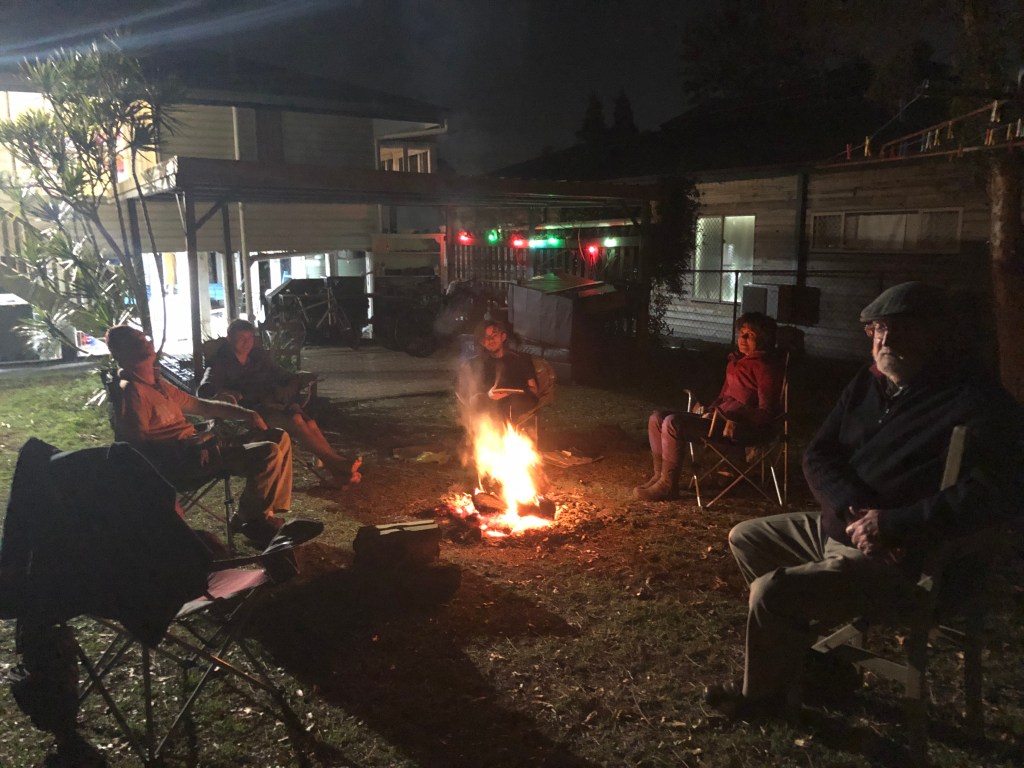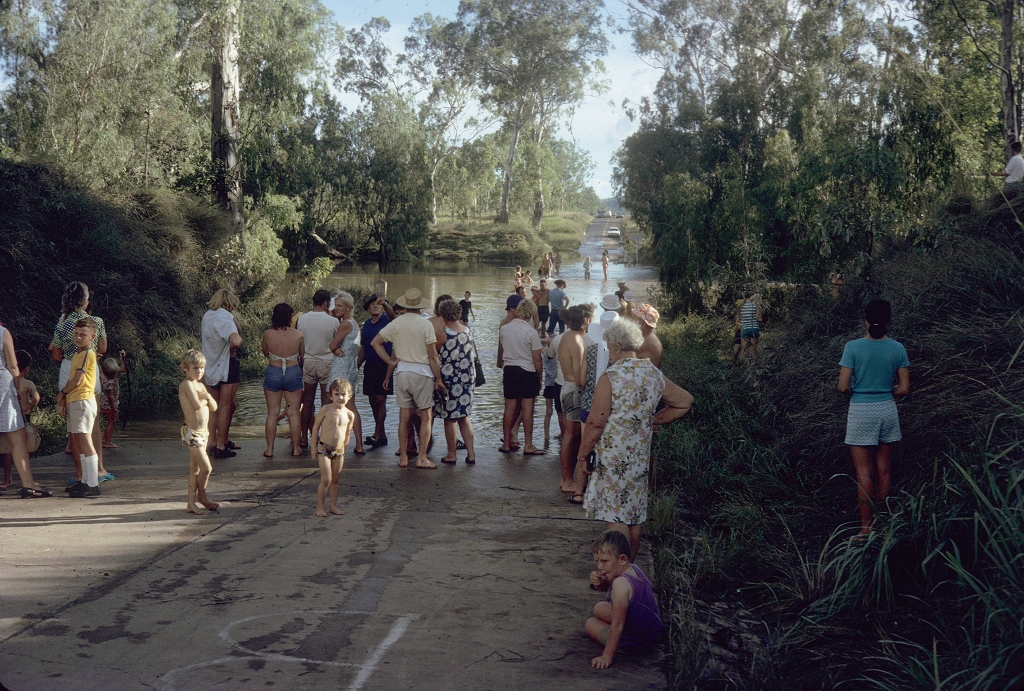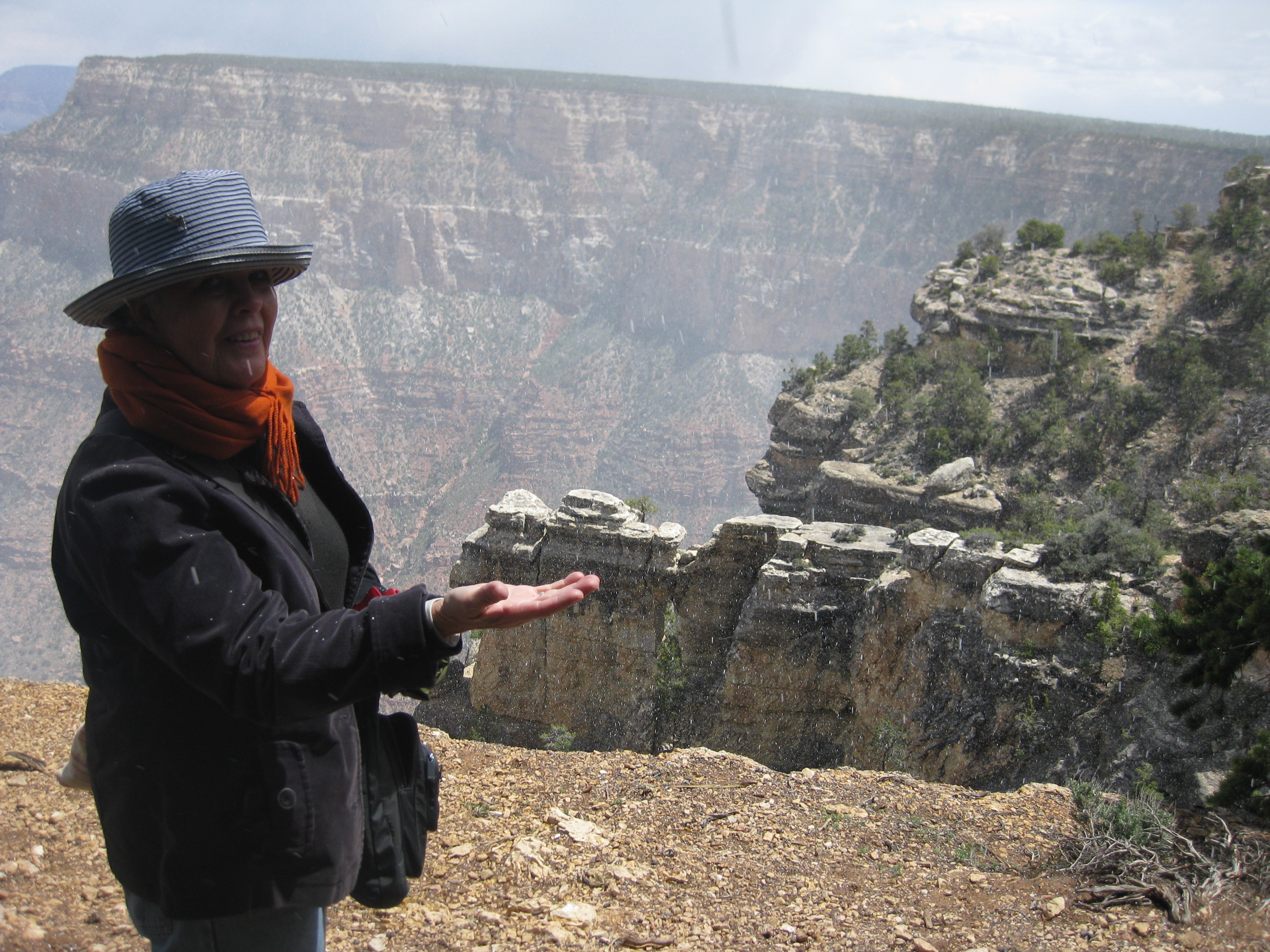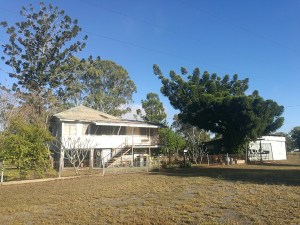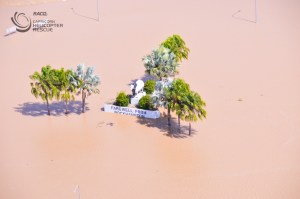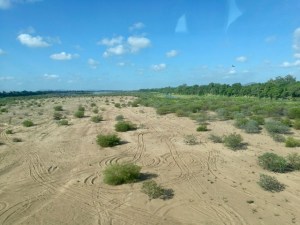In 1974 we flew to Cairns for the Easter break, little Lizzie and Matt and I. We’d left our car in Cairns after the Christmas holidays because all roads back to Burketown were flooded and impassable, that historically wet summer. My plan was to pick up the car and drive to Townsville, collecting Granny O’Brien at Innisfail on the way.
Con was on his way from Burketown to Townsville in a friend’s ute, with two other men. It would be one of the first cars to attempt the bush roads after the wet season, and he had a story to tell that Good Friday evening in Townsville: of getting hung up on rocks when crossing a place called Fiery Creek on a road that hadn’t seen a grader since before the Wet; of dragging out rocks and mud from under the ute; of a fellow-traveller with a bad hangover, throwing up in the bushes while the others got plastered in mud.
I also had a story to tell. Our Holden hadn’t been used for months, and something had gone wrong with the brakes. To avoid over-heating them I’d had to crawl at a nervous 50kph the whole 350 kilometres to Townsville, including over the steep Cardwell Range. Granny and I and the two children arrived in Townsville exhausted and in the dark.
…and so we continued
And arriving at evening, not a moment too soon
Finding the place…
During COVID restrictions last year, our family began socially distanced fire pit gatherings in Lizzie’s suburban backyard, with poetry readings for entertainment. Last month she chose a poem which reminded her of the road trips from her childhood. It was that classic of English literature: “The Journey of the Magi”, by T.S. Eliot.
I’ve know this poem since school, with its religious imagery and sombre, unsettling power; but Lizzie read it with a new, entertaining twist. She compared the harrowing, winter journey of the Three Wise Men to our old trips around Queensland. It is just so true.
A cold coming we had of it,
Just the worst time of the year
For a journey, and such a long journey:
The ways deep and the weather sharp,
The very dead of winter.
There wasn’t much cold in our trips, but we often travelled at the worst time of the year, the hot, wet season – and the ways were indeed often deep with water or mud. At Christmas and New Year we moved to or from isolated parts of the state in either punishing heat or pouring rain, or both, as Con was transferred from school to school as principal. For a break from isolation, for visits to family and a taste of coastal comforts, we took holidays at that time of year too.
Like the Magi’s, our journeys weren’t always easy.
And the camels galled, sorefooted, refractory,
Lying down in the melting snow.
Then the camel men cursing and grumbling
and running away, and wanting their liquor and women,
And the night-fires going out, and the lack of shelters,
And the cities hostile and the towns unfriendly
And the villages dirty and charging high prices:
A hard time we had of it.
Living and working in an isolated place, you may have nowhere to stay when you’re away on holiday. After a week or so with relations or friends, sharing beds and mattresses on the floor, you long for a place of your own.
For Christmas 1973, we’d driven the 2100-kilometre trip from Burketown to Brisbane, with our small children, staying with family; but we soon yearned for the holiday flat we’d booked in Cairns, a three-day trip north. In January 1974 we set off, in the face of warnings of floods and cyclones, just a few weeks before Brisbane suffered catastrophic floods.
On the old Marlborough Stretch, a 240-kilometre section of the Bruce Highway that looped west through lonely cattle country between Marlborough and Sarina, the rivers and creeks north and south of us flooded. We were marooned.
In my story Horror Stretch I’ve described it all – how we spent one night in the car, the next in a broken-down caravan behind a roadhouse. The roadhouse managers charged us to toast the bread we provided for breakfast and shared with other travellers. Then we started north again to wait on the banks of Funnel Creek with all the other travellers for the floods to go down.
Hospitality and tourism staff these days are usually well-trained locals or cheerful young foreign backpackers, but you can still encounter lonely, fed-up people, slipshod service, even hostility. The concept of “service” is part of the problem. As in, “You city people come through here expecting us to wait on you. We’re not your servants!”
Then we came to a tavern with vine-leaves over the lintel,
Six hands at an open door dicing for pieces of silver,
And feet kicking the empty wine-skins.
If we stayed in a pub, back then, the beer would be cold, but for “The Ladies”, it was Johnny Walker, brandy, gin or sweet sherry – in the Ladies Lounge.
There were times we regretted
The summer palaces on slopes, the terraces,
And the silken girls bringing sherbet.
Barista coffee?
“Where do you think you are, mate? Queen Street?”
In a 21st century country motel you’ll probably have a good bed and hot water in the shower, and even a decent air-conditioner; but you may find the pool is green, and the promised free Wi-Fi works only next to the office, not down in Room 23.
Sleeping in snatches,
With the voices singing in our ears, saying
That this was all folly.
Often before a long trip, by car in Australia or flying overseas, I’ve thought, “Why are we doing this?
“Why are we leaving our safe home to trust ourselves to bad roads and bad drivers; to a twenty-four-hour flight in a crowded plane; to the risk of lost luggage, tedious queues, passport controls, sickness in a foreign country?
“Why are we spending money we should be saving on a frivolity like travel?”
It is folly; but it’s interesting and exciting. We see things we could never have imagined if we’d stayed home. Snow on the Grand Canyon. Oak trees in Richmond Park, UK.
And sometimes it’s the only way we can see our far-flung family.

Then at dawn we came down to a temperate valley,
Wet, below the snow line, smelling of vegetation;
With a running stream and a water-mill beating the darkness,
And three trees on the low sky,
And an old white horse galloped away in the meadow.
These days the highway from Marlborough to Sarina is shorter, flood-proof and closer to the coast. There is one thing I miss about the old road, though. At the northern end, we would abruptly leave the dry country behind and wind down into the green Tropics- to palm trees and cane fields, sugar mills and rain trees and the relief of safe arrival.
Perhaps one day we’ll brave the “Horror Stretch” again, just for that arrival into Sarina, humid and smelling of vegetation. Not too much of the wet, though.
All this was a long time ago, I remember,
And I would do it again…
We returned to our places, these Kingdoms,
But no longer at ease here, in the old dispensation…
Our grown-up children remember those long trips, with all their delights and discomforts, stresses and miseries and fun. Now they and their children are travellers too, and we all tend to feel discontented if we have to stay in one place for too long.
For months of this last year, Matt and his family have been locked down in the COVID-plagued European cold. They’d love to be in a hot, crowded car, coming down into the green, sunny Queensland tropics once again.
The Journey of the Magi
T S Eliot, 1927
A cold coming we had of it,
Just the worst time of the year
For a journey, and such a long journey:
The ways deep and the weather sharp,
The very dead of winter.’
And the camels galled, sorefooted, refractory,
Lying down in the melting snow.
There were times we regretted
The summer palaces on slopes, the terraces,
And the silken girls bringing sherbet.
Then the camel men cursing and grumbling
and running away, and wanting their liquor and women,
And the night-fires going out, and the lack of shelters,
And the cities hostile and the towns unfriendly
And the villages dirty and charging high prices:
A hard time we had of it.
At the end we preferred to travel all night,
Sleeping in snatches,
With the voices singing in our ears, saying
That this was all folly.
Then at dawn we came down to a temperate valley,
Wet, below the snow line, smelling of vegetation;
With a running stream and a water-mill beating the darkness,
And three trees on the low sky,
And an old white horse galloped away in the meadow.
Then we came to a tavern with vine-leaves over the lintel,
Six hands at an open door dicing for pieces of silver,
And feet kicking the empty wine-skins.
But there was no information, and so we continued
And arriving at evening, not a moment too soon
Finding the place; it was (you might say) satisfactory.
All this was a long time ago, I remember,
And I would do it again, but set down
This set down
This: were we led all that way for
Birth or Death? There was a Birth, certainly
We had evidence and no doubt. I had seen birth and death,
But had thought they were different; this Birth was
Hard and bitter agony for us, like Death, our death.
We returned to our places, these Kingdoms,
But no longer at ease here, in the old dispensation,
With an alien people clutching their gods.
I should be glad of another death.

